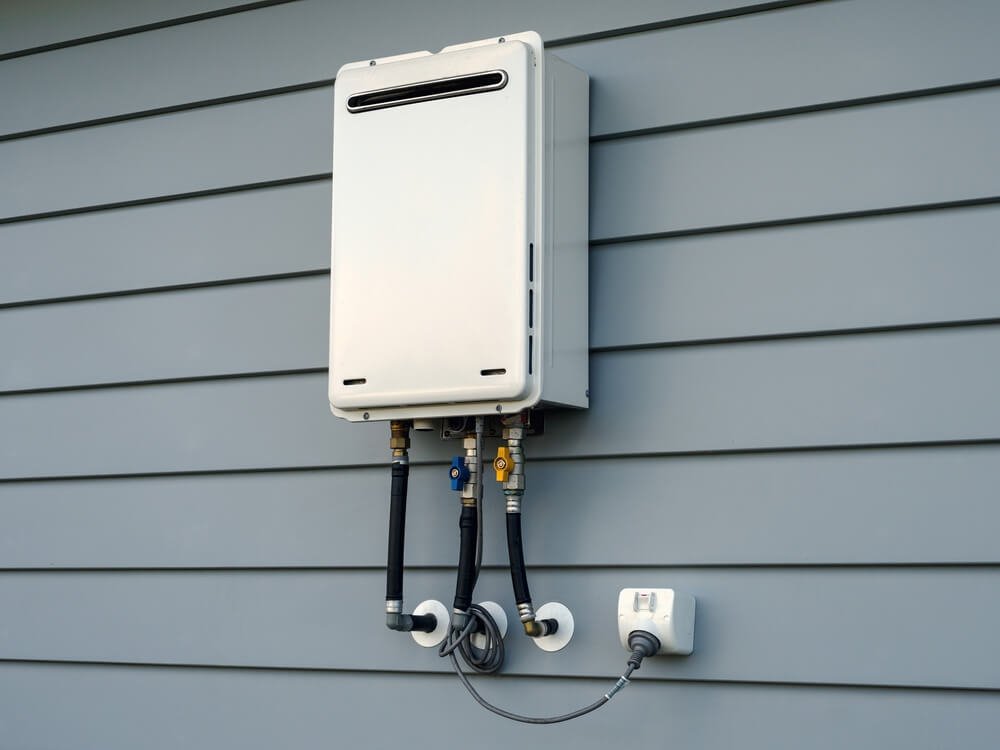Tankless water heaters have surged in popularity for their energy efficiency, space-saving design, and endless supply of hot water. However, if you’ve considered making the switch from a traditional tank-style water heater, you may have encountered a common concern: Why is tankless water heater installation so expensive? While the unit itself can be pricey, the installation costs often catch homeowners by surprise.
1. What Is a Tankless Water Heater?
A tankless water heater (also called an on-demand water heater) heats water only when you need it, rather than storing a large volume of hot water in a tank. Unlike traditional models that continuously heat and store water, tankless systems use powerful heating elements—either gas burners or electric coils—to quickly heat water as it flows through the unit.
Key Benefits of Tankless Water Heaters:
- Endless Hot Water: Water is heated on demand, so you never run out.
- Energy Efficiency: No standby heat loss from stored water, which can lower energy bills.
- Space-Saving: Compact units mount on walls, freeing up floor space.
- Long Lifespan: Typically last 20 years or more, compared to 10-15 years for traditional heaters.
While the advantages are compelling, the installation process for a tankless water heater is far more complex than that of a traditional unit, contributing to its higher cost.
2. Why Is Tankless Water Heater Installation So Expensive?
Installing a tankless water heater isn’t as simple as swapping out one unit for another. The process often requires significant modifications to your home’s plumbing, electrical, and ventilation systems. Here’s a detailed look at the factors driving up installation costs
2.1 Upgrading Electrical Systems
For electric tankless water heaters, your home’s electrical system needs to handle the increased power demand. Tankless units require higher voltage and more amperage than traditional heaters. In many cases, this means upgrading your electrical panel, wiring, and circuits.
- Cost of Electrical Upgrades: Depending on the complexity, upgrading an electrical panel can cost between $500 to $2,000.
- Why It’s Necessary: Most homes are equipped for traditional water heaters, which require far less electrical power. Tankless units often need 200 amps or more to operate efficiently.
2.2 Gas Line Modifications
For gas tankless water heaters, the existing gas line may not provide enough fuel to power the unit. Tankless systems often require a larger gas supply to meet the higher demand for rapid water heating.
- Cost of Gas Line Upgrades: Installing a larger gas line or modifying the existing one can range from $500 to $1,500.
- Why It’s Necessary: Traditional gas water heaters typically use 30,000 to 50,000 BTUs, while tankless models may require 150,000 to 200,000 BTUs or more.
2.3 Ventilation System Adjustments
Proper ventilation is crucial for gas-powered tankless water heaters. These units produce combustion gases that need to be vented safely outside your home.
- Cost of Ventilation Upgrades: Installing or modifying ventilation systems can cost between $300 to $1,200, depending on the complexity.
- Why It’s Necessary: Tankless heaters often use direct venting systems with specialized pipes to handle high temperatures and exhaust gases efficiently.
2.4 Plumbing Changes
Tankless water heaters require precise plumbing configurations to operate effectively. This often involves rerouting pipes or adding new lines to accommodate the unit.
- Cost of Plumbing Modifications: Depending on the complexity, plumbing adjustments can range from $500 to $1,500.
- Why It’s Necessary: Traditional water heaters have a straightforward connection to the water supply. Tankless units may require additional piping or modifications to ensure proper water flow and pressure.
2.5 Unit Mounting and Placement
Tankless water heaters are typically wall-mounted, which may require structural modifications to support the unit securely.
- Cost of Wall Mounting: Adding supports or mounting brackets can add $100 to $300 to the installation cost.
- Why It’s Necessary: The placement of the unit impacts efficiency and safety. Wall-mounted units need to be installed in areas that can handle potential heat and moisture.
2.6 Labor Costs
Professional installation is essential for tankless water heaters due to their complexity. Licensed plumbers, electricians, and HVAC specialists may all be involved in the process.
- Average Labor Cost: Installation labor can range from $1,000 to $3,000 or more.
- Why It’s Necessary: Incorrect installation can lead to safety hazards, inefficiency, and damage to the unit.
2.7 Permits and Inspections
Many municipalities require permits and inspections for tankless water heater installations. This ensures that the installation meets local building codes and safety standards.
- Cost of Permits: Permit fees typically range from $50 to $500.
- Why It’s Necessary: Compliance with building codes ensures safe operation and protects your investment.
3. How Much Is Water Heater Installation (Traditional vs. Tankless)?
To understand why tankless water heater installation is more expensive, let’s compare the costs with traditional water heater installation
Traditional Water Heater Installation
- Unit Cost: $400 to $1,500
- Installation Cost: $500 to $1,500
- Total Cost: $900 to $3,000
Tankless Water Heater Installation
- Unit Cost: $1,000 to $3,000
- Installation Cost: $2,000 to $5,000
- Total Cost: $3,000 to $8,000
Why the Difference?
- Complexity: Tankless installations often require upgrades to electrical, gas, and ventilation systems.
- Efficiency: Tankless units offer long-term energy savings, which can justify the higher upfront cost.
4. Are Tankless Water Heaters Worth the Cost?
While the initial cost of installing a tankless water heater is high, the long-term benefits may make it worthwhile. Here are some advantages to consider
4.1 Energy Efficiency
- Tankless water heaters are 20% to 30% more energy-efficient than traditional models. This can translate to annual savings of $50 to $100 on your energy bills.
4.2 Longer Lifespan
- Tankless units typically last 20+ years, compared to 10-15 years for traditional heaters. This means fewer replacements over time.
4.3 Endless Hot Water
- Tankless heaters provide continuous hot water, making them ideal for large families or homes with high hot water demands.
4.4 Space-Saving Design
- Their compact size frees up valuable floor space, which is especially useful in smaller homes.
4.5 Reduced Risk of Leaks
- Since tankless heaters don’t store water, there’s less risk of catastrophic leaks or tank failures.
5. Tips for Reducing Tankless Water Heater Installation Costs
If you’re set on a tankless water heater but want to minimize costs, consider these strategies
- Get Multiple Quotes: Compare quotes from different licensed plumbers to find the best deal.
- Choose the Right Size: Selecting the appropriate unit size avoids unnecessary costs and ensures efficiency.
- Bundle Upgrades: If you’re already upgrading electrical or plumbing systems, combine these tasks with the installation.
- Look for Rebates: Check for local rebates or tax credits for energy-efficient home upgrades.
- Maintain Your Unit: Regular maintenance can extend the lifespan of your unit, protecting your investment.
The question “Why is tankless water heater installation so expensive?” boils down to the complexity of the installation process. Electrical upgrades, gas line modifications, ventilation requirements, and professional labor all contribute to the higher cost compared to traditional water heaters.
While the upfront investment can be substantial, the long-term benefits—such as energy efficiency, a longer lifespan, and endless hot water—can make a tankless water heater a wise choice. Understanding the factors behind the cost helps you make an informed decision and ensures you’re prepared for this valuable home upgrade.











